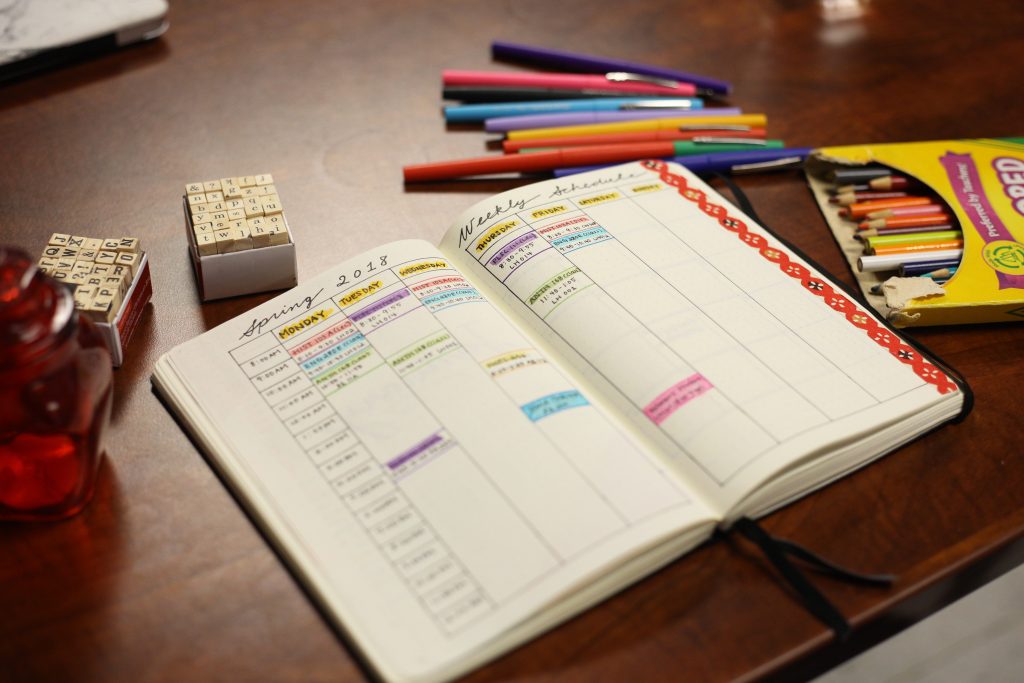Imagine this: It’s the beginning of the school year and you’ve decided to organize your life. In past years, you’ve let class assignments, papers and club meetings fly completely under the radar until it was too late. You’re tired of feeling like you’ve never been on top of things and you’re sick of scribbling your to-do lists on the back of your hand. You want to be organized, but store-bought planners either don’t have enough space, match your aesthetic or have the features you’re looking for.
If you’re facing these problems, why not give bullet journaling a shot this semester? It’s fun, completely personalized and as quick as you want it to be. Here are some tips on starting your first bullet journal from a seasoned journalist.
Know yourself
Before you embark on your bullet-journaling experience, ask yourself a few questions about your lifestyle. This will help you understand what you’re looking to organize, and help you stick to consistent journaling. In my experience, I really enjoyed taking the time to plan out my journal, but I just didn’t have time to do so in my day-to-day schedule. For this reason, I tend to plan out my journal when I have extra time, such as over breaks. I also plan out multiple months to a semester in advance, so all I have to do when the semester begins is fill out my journal instead of constantly having to plot out the days of the week, month and other details. I kept my journal fairly minimalist to save time and keep it organized, and opt for a polished look with some embellishments. To get started, think about what you’d want in your ideal planner — perhaps that’s a calendar spread at the start of every month, an expenses tracker, a habit log to keep you accountable, a study schedule or a page for goal setting.
Find inspiration
It can seem daunting to start a bullet journal because every choice is up to you. You might be wondering what notebook to buy, how to format your year and much more. Luckily, bullet journaling is a popular trend, meaning the internet has a trove of bullet-journaling articles and how-to videos where creators walk you through the process step by step. They’ll even show you the specific pens, paper and tools they use, as well as how to decorate and embellish your journal with calligraphy.
Use dotted paper
If you want the neat look of lined paper, the freedom to doodle on unlined paper and the accuracy of grid paper, consider getting a notebook with dotted paper. If you look online for examples, you’ll probably find that dotted paper is the most-used type of paper for bullet journaling because of its versatility — you can draw in everything from calendar boxes, to charts, to flowers.
Get a ruler
If you prefer the neat look of straight lines, consider buying a mini ruler on Amazon. They’re super cheap, portable and usually come in packs, so there’s always a spare if you lose one. Some of the most popular notebooks for bullet journaling, such as the Leuchtturm1917, have a little pocket on the inside cover so you can slip stickers or your ruler into it.
Have fun!
Let’s be real — the bullet journal is only going to work for you if it actually makes you want to use it. This may sound silly, but after trial and error, you might realize that certain features make your journal feel like a chore, and that’s totally okay! Remember that the bullet journal is there to serve you, not the other way around. Draw away and add extra features if you know you’ll enjoy it, but know that there are various great styles that can suit your needs. Don’t over-stress about making it perfect or super pretty. Instead, add things that will help you de-stress your life.



